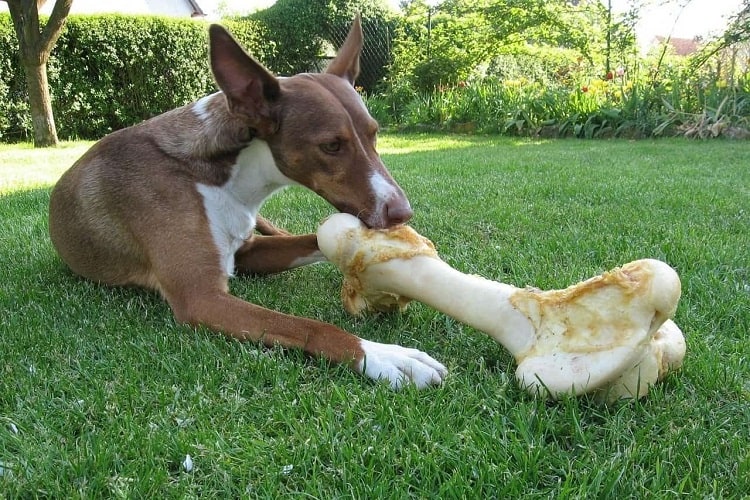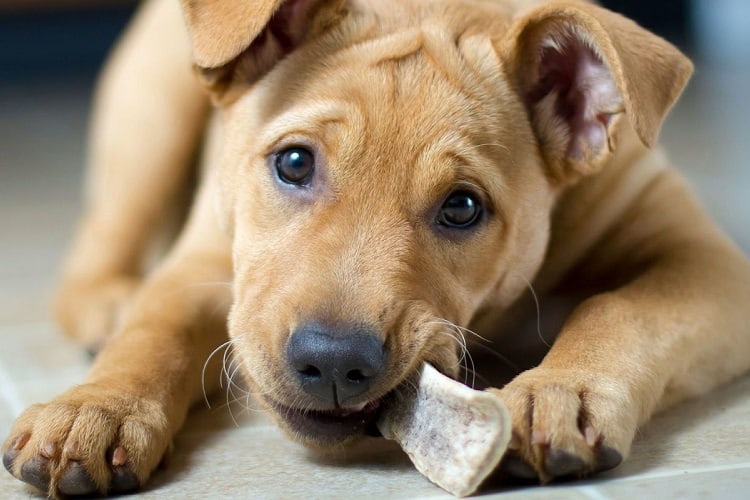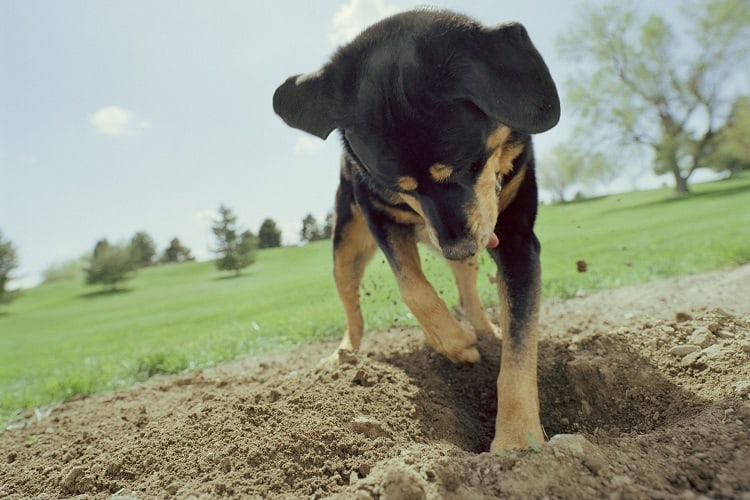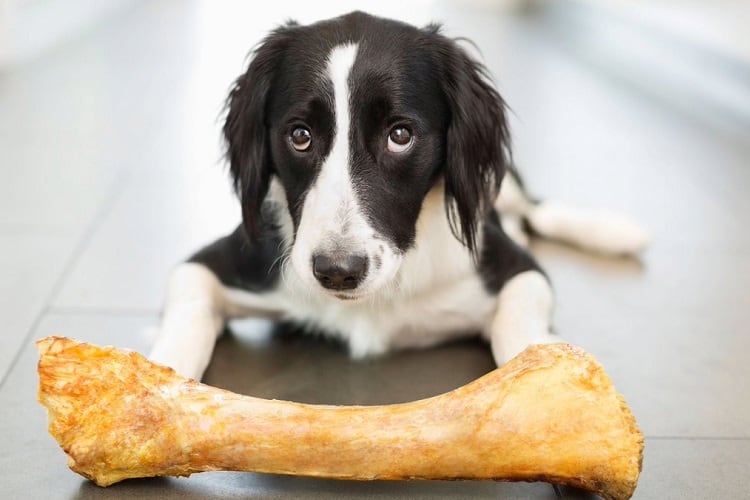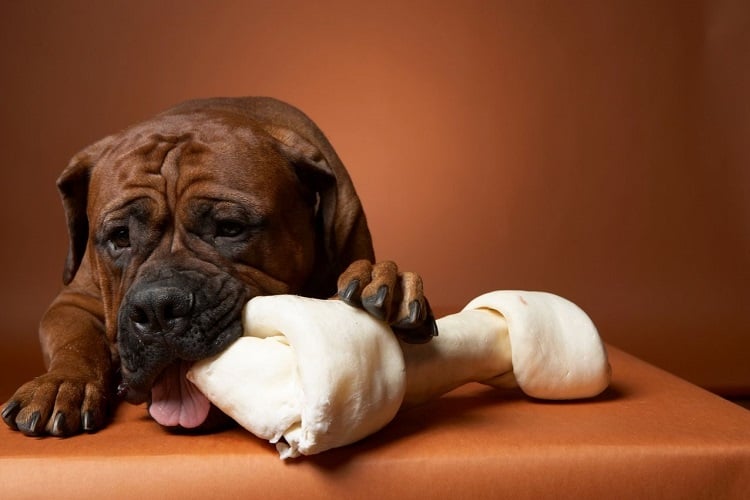A dog and its bone are two inseparable companions. Give a dog a bone, and it will happily chew away for hours.
This love is shared across seemingly all dog breeds and sizes, which is why pet owners worldwide dole out bones as a reward or to keep them busy for a while.
Giving a bone to a dog is also a great way of ensuring that it does not chew on furniture, baseboards, sneakers, socks, books, electrical cords, and other important or dangerous household items.
But why do dogs like bones so much? What makes these treats so special above all others? What is this obsession rooted in? And, most importantly, are they truly safe for your furry friend?
This guide will answer all of these questions and more. We will also tell you about bone alternatives that you can feed your pet instead.
Let’s dive in!
Do All Dogs Love Bones?
Dogs of different breeds, sizes, and ages enjoy a good bone.
That being said, some dogs may be an exception to the rule and may not care much for these treats.
It could be that they prefer the taste of other chews or their favorite toy instead. Or perhaps they suffered an injury or became sick due to chewing on a bone and have become wary of them.
Whatever the reason may be, if your dog does not like bones, we have a list of a few alternatives to bones that you can give your pet.
7 Reasons Dogs Like Bones
1. Rooted in History
If you want to know why do dogs like bones as much as they do, you will have to delve deeper into their history.
Dogs’ wolf-like ancestors hunted in packs for their survival and fed on the meat of animals such as bison and deer. These early dogs would surround and attack their prey and then tear apart the flesh and eat the bones and other body parts.
During the cold and dry winter months, the prey would be too skinny and depleted of fat to provide much nutritional value to the wild dogs. So they would have to rely on the fat stored inside the bone marrow of the prey for nutrition.
Even today, wild dogs eat the bones of their prey. Domesticated dogs are usually fed corn-based diets that contain low fat and calcium.
Bone marrow is an excellent source of fat and minerals such as calcium and phosphorus. These nutrients aid in the development of dogs’ bones and muscles and keep them healthy and fit.
2. Designed to Chew On Bones
Dogs have strong teeth and powerful jaw muscles meant for crushing bones.
Since their owners primarily feed them a lot of soft foods, they need to chew on bones to exercise their jaw muscles and put their teeth to good use.
3. Fresh Meat
Raw bones usually have a little bit of meat still on them. Removing every last bit of meat from the bone gives your dog something fun and challenging to do.
Moreover, these tidbits are nutritious and delicious, making them a win-win for your pet.
4. Dental Health
Chewing on bones is good for a dog’s teeth and gums. It helps clean the teeth by removing the buildup of plaque and tartar and freshens breath.
It also massages and stimulates the gums. This, in turn, helps keep a dog’s teeth and gums healthy and strong.
5. Digestive Health
Chewing on raw bones adds roughage to a dog’s diet. This can help regulate your pet’s bowel movements and clear out its digestive tract.
6. Prevents Destructive Chewing Habits
Dogs love to chew on anything and everything.
So if you don’t give your pet a bone to chew, it will most likely chomp on and destroy your belongings, including your furniture, electrical wires, books, documents, shoes, socks, and anything else that it can get its paws on.
7. Relief from Stress and Boredom
Giving a dog a bone is a great way to distract it from anxious thoughts and keep it focused on something fun.
The simple act of chewing bones provides the mental stimulation that your dog needs and releases endorphins. Endorphins are feel-good chemicals that can keep your dog happy and stress-free.
Gnawing on bones also provides an entertaining activity for your pet and keeps boredom at bay.
Why Do Dogs Hide Bones?
Now that you know why your dog likes bones, you may wonder, “Why does my pet hide them?”
Good question. This habit also goes back to its ancestral roots.
Wild dogs had to hunt for their meals. As there was no guarantee when they would be able to catch their next prey, they would bury bones and other food items to store them for the future. Hiding bones also protects them from direct sunlight and decomposition.
When food was scarce, there was stiff competition among a pack’s members for food. So dogs that successfully caught prey would eat as much as possible with their family and then bury the leftovers to hide them. Hiding food was an essential means of survival for wild dogs.
Today, dogs hide bones to keep them safe and savor them later. It is part of their natural instinct to consider bones valuable and act accordingly.
Are Bones Safe for Your Dog?
As mentioned earlier, raw bones are a good source of nutrients such as fat and minerals that help keep your dog healthy.
Bones can satisfy your pet’s chewing cravings and stimulate saliva enzymes. This prevents the buildup of plaque and tartar on the teeth and reduces the risk of gum disease.
However, giving your dog the wrong kind of bone or cooked bones can make it prone to serious injuries. Cooked bones—especially chicken and turkey bones—are brittle and can easily splinter and break into tiny pieces.
These small pieces can cause an obstruction and harm your dog’s digestive tract. They can also get lodged in your pet’s airways, leading to choking and death. Cooked bones don’t have as much fat inside the bone marrow, thus significantly reducing the nutritional benefits.
Don’t give your pet chunks of bones as it can cause blockages and injury. If your pet has an upset stomach, avoid giving it bones until it recovers.
Make sure to keep a close eye on your dog while it chews on bones to ensure that it does not choke or get injured.
Bone Alternatives
If your dog does not enjoy eating bones or cannot do so due to an injury or illness, many alternatives can deliver similar benefits. Your dog can spend hours happily chewing on these, too!
Beef hide chews or rawhide chews are wonderful options as they have a nice, chewy texture that dogs just love. They are suitable for strong and light chewers alike, and they come in fun shapes, too.
Beef tendons, pork hide chews, and piggy sticks are other fantastic bone alternatives that you can buy for your pet. These bone substitutes also have high nutritional value that makes them beneficial to your pet’s health.
Bully sticks are another fantastic alternative to regular bones. They are natural chews made from bull's pizzle and are packed with nutrients that will help ensure your dog’s long-term health. They come in different sizes, shapes, and textures, so you can choose one that meets your dog’s needs.
You can also formulate and feed your dog simple frozen treats such as frozen broth or peanut butter. They are nutritious, fun to chew on, and are great alternatives to bones.
Conclusion
Now you know why dogs like bones and do their best to hide them.
It is part of their instinct, and chewing on bones benefits your dog in many ways. It promotes digestive and dental health, relieves anxiety, stress, and boredom, and keeps destructive chewing tendencies at bay.
Just make sure that you feed your pet only raw bones and not cooked bones. Avoid giving it chicken and turkey bones. Do not give your dog small bones that can obstruct its digestive tract.
There are also a lot of great alternatives to bones that are available on the market today. They are equally nutritious and fun to chew on.
We hope our guide helped you understand your dog’s love for chewing on and hiding bones. If you enjoyed reading it, browse our website for more helpful and fun-to-read blog posts. Also, don’t forget to share this article with other pet lovers and pet parents.

Dan is a well respected content researcher who has vast experience working projects in the pets niche. He is a frequent contributor to dogtemperament.com and loves delivering numerous helpful dog articles like this one that are read by thousands of our readers monthly.

